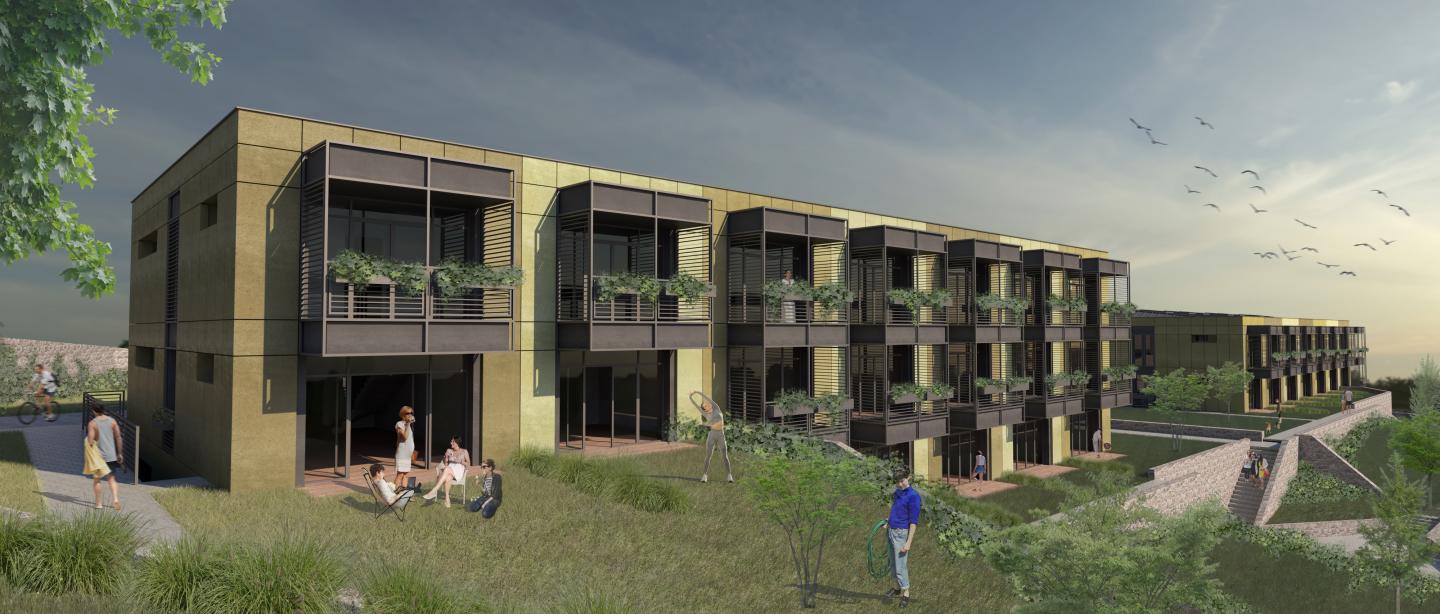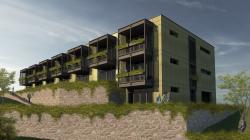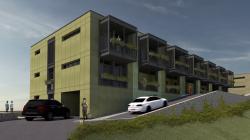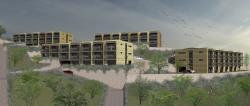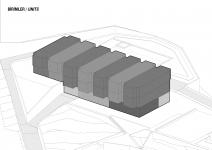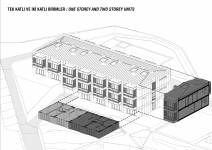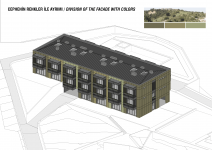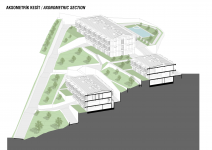As the first and most challenging phase of the residential project located in Saricaeli village of Çanakkale, building blocks were positioned on a plot with 33m elevation difference, in a way all living areas are faced toward the valley in the South without blocking the views of each other. The plot was divided into four parcels with a single block on each one, according to the rough locations of building masses shaped per the maximum façade width allowed.
The private vehicle access road of each parcel that can be entered from the public road along the south border of the plot was planned in a way allowing each one to function independently as well as connect with other parcels. Open areas encircling building blocks and vehicle roads were divided into terraces creating garden areas accessible from the residential units whereas minimizing the heights of retaining walls. Open connection stairs were created between those terraces, in order to enable pedestrian circulation among parcels.
The building depths were kept below 15m, in order to comply with the steep topography, as well as to maximize natural lighting and ventilation. The whole 40m maximum width was used on the façade facing the view and sun. The maximum dimensions of the building masses constrained by both the setbacks and the related zoning regulations remained the same throughout all parcels so that the allowed construction area, 30% of which cannot be used, is not further wasted.
Approximately 174m² duplex units with all living rooms and master bedrooms facing the south were lined next to each other along the wide façade. Entrances to those were given from the semi open common corridor spanning the north façade. Varying sizes of 1, 2 and 3 bedroom apartments with gardens in front were created on basement floors, which open up from the terrain differently according to the slope of each parcel. The subterranean parts of the basement floors were used as parking, technical and storage spaces. Accesses to the garages were given via open staircases from back and side yards, which also provides natural cross ventilation.
The maximum balcony area allowed was divided equally to each duplex unit along the front and rear façades. All bedrooms and living rooms not opening up to a garden were given access to a balcony. Sunlight coming to the living rooms and bedrooms on the south at noon was blocked with the balcony projections. Both sides of balconies were covered with metal louvers, which block the sunlight coming from the southeast and southwest, whereas providing privacy among neighbors. Fixed plant pots were mounted in front of all balconies that can be adorned with the preferred flowers of inhabitants.
Façades excluding the glass surfaces opening up to the balconies were clad with precast panels that are painted with differing hues distinguishing each residential unit from the others. The colors of the precast panels were selected the hues of green existing on the plot, so that the blocks located on different levels visually unite with the landscape.
Roofs were clad with metal standing seam panels where photovoltaic panels can be easily mounted. The roof surfaces were hidden beneath the façade parapets thanks to their low angle. Roof windows were opened on top of each duplex unit, so that the circulation hall and the stairs are naturally illuminated, whereas natural ventilation via chimney effect is enabled.
2023
Concrete structure, precast concrete facade panels
Ali Manço, Zuhtu Usta, Ezgi Tekin, Ugurcan Diken, Piril Soymen, Dilek Birgun, Nilay Rallas, Egemen Turk
